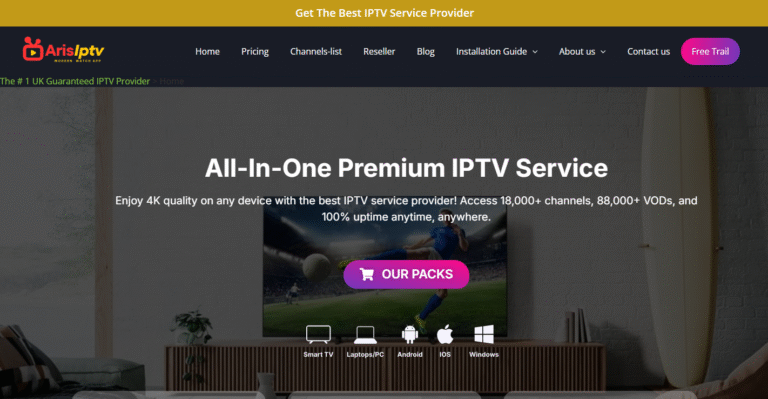Understanding IPTV: What It Is and How It Works
Internet Protocol Television (IPTV) represents a significant shift in how we consume television content, relying on internet protocols rather than traditional terrestrial, satellite, or cable formats. This technology allows users to receive television programming via the internet, allowing for a more versatile and accessible viewing experience. Unlike conventional broadcasting, which uses radio signals to transmit content, IPTV delivers multimedia content through a broadband internet connection, facilitating a range of viewing options.
IPTV services generally fall into three primary categories: live television, on-demand content, and time-shifted programming. Live IPTV allows viewers to watch television channels in real-time, similar to traditional antennas or cable. On-demand content enables users to access a library of shows and movies whenever they choose, providing flexibility in viewing schedules. Time-shifted programming, on the other hand, enables viewers to pause, rewind, or fast-forward through content, enhancing the user experience by empowering viewers to control their consumption.
The underlying technology that supports IPTV relies on streaming protocols, which facilitate the transmission of data over the internet. Common streaming protocols include Real-Time Streaming Protocol (RTSP), Hypertext Transfer Protocol (HTTP), and others that ensure smooth delivery of audio and video content. Moreover, the efficacy of IPTV services depends heavily on the network infrastructure in place. A robust broadband connection is essential for optimal performance, with higher speeds allowing for better-quality streams and reduced buffering times.
Accessing IPTV requires specific devices, including smart TVs, set-top boxes, computers, and mobile devices. These devices decode the digital signal and display content for user interaction. Consequently, understanding how IPTV works and what it requires sets an essential foundation for individuals considering this modern viewing option. Through IPTV, consumers gain a level of convenience and variety previously unattainable with traditional broadcasting methods.
Comprehensive IPTV Reviews and Recommendations
The landscape of Internet Protocol Television (IPTV) services has rapidly expanded, offering users a wide array of choices. Among the popular IPTV providers, some of the noteworthy names include Hulu Live TV, YouTube TV, and Sling TV. Each of these services provides unique features that cater to diverse viewer preferences. Hulu Live TV, for instance, combines traditional channel offerings with an extensive library of on-demand content, presenting an attractive option for those who enjoy both live and recorded programming.
Pricing is another crucial aspect to consider when evaluating IPTV services. Services like Sling TV are recognized for their flexible, budget-friendly packages, while YouTube TV tends to be on the higher end with its comprehensive channel lineup. It is recommended to review the pricing structures carefully, as well as any promotional discounts that might be available for new subscribers. Furthermore, the variety of channels offered plays a significant role in user satisfaction; therefore, examining the channel lineup is advisable for a tailored viewing experience.
Performance and user experience can significantly differ across IPTV solutions. Factors such as streaming quality, loading times, and interface usability are integral to overall satisfaction with the service. For example, many users value a smooth, high-definition streaming experience without buffering delays. Additionally, device compatibility cannot be understated, as potential subscribers should ensure that the IPTV service can be accessed on their preferred devices, such as smart TVs, laptops, or mobile phones.
When evaluating an IPTV service, it is essential to consider customer support options as well. Reliable customer service can enhance user experiences, making it easier to resolve any technical issues or inquiries regarding settings and subscriptions. By weighing these important factors—features, pricing, channel offerings, performance, and support—readers will be better positioned to select the most suitable IPTV service, ultimately enriching their viewing experience.






